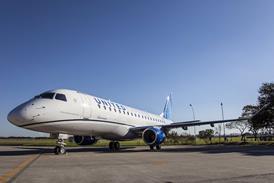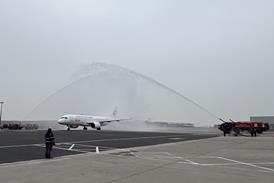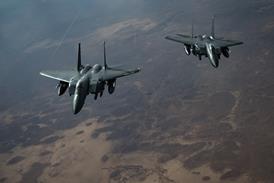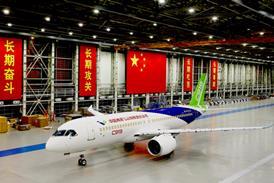As the first multi-crew pilot licence graduates begin their flying careers with European airlines, the MPL is starting to win over the industry sceptics
The multi-crew pilot licence (MPL) looks set to become the future default airline training system, despite some resistance to this new airline pilot training methodology. Initial line assessments of the first few pilots produced by the new system are favourable, and if that continues it seems likely that opposition - already declining - will crumble.
The MPL is not just a licence, says the International Civil Aviation Organisation, it is a global piloting performance standard based on the first fundamental peer review of flightcrew training objectives and methodology since 1944. As it rolls out in different parts of the world, the logic behind the call to review pilot performance objectives and training systems for airlines in today's world, with its much-improved training tools, is looking more and more obvious, according to carriers that are backing it.
But it is still early days. Denmark-based Sterling Airlines, working with the Center Air Pilot Academy and the Danish Aviation Authority, has devised and run the world's first fully approved MPL course and its students have graduated and joined an airline. The first four MPL-qualified aviators finished their line training with Sterling on Next Generation Boeing 737s in 1 October and today are flying out of the carrier's Oslo, Norway base. Sterling's chief training pilot Capt Per Lilja is pleased with the results: "Their progress during line training has been good - considerably better than we have seen with other low-experience pilots."
Meanwhile, on the other side of the world, a more challenging manifestation of the complexity of devising an MPL course has been taking place. It is one thing for ICAO to set the performance objectives, another to devise and validate the course that will enable pilots to achieve them.
The Brisbane, Australia base of Alteon, the Boeing-owned airline pilot training company, has the same objectives as Center and Sterling: to enable its graduates to meet ICAO's MPL piloting performance specifications. But it has been working with two national aviation authorities instead of one, to train Chinese student pilots to MPL for two China-based carriers, Xiamen Airlines and China Eastern.
The challenges facing Alteon include:
- it must satisfy both authorities, the Civil Aviation Authority of China and the Australian Civil Aviation Safety Authority
- the student pilots are not training in their home environment
- the students are significantly less familiar with the English language than Sterling's Danish students. Alteon admits that the language demands, combined with the intensive flying, can overload the students.
This sort of overload can also happen on a traditional commercial pilots licence course. But when the objective of this early exercise is not as simple as training the young pilots according to a familiar instructional formula, but simultaneously to take a new training process and to run it as a validation of the new syllabus with its higher dependence on flight training devices and simulators, the task becomes even more demanding (see box, right).
Global standard
Because the intrinsic objective of ICAO's MPL is that it will represent a single minimum global pilot performance standard wherever in the world flightcrew are trained, the Alteon experience is proving that the course will have to vary in length according to the students' preparedness at the beginning of the course. Among the measures of that preparedness, English language skills, general education and how much exposure the students have had to technology and operating machinery all feature highly. Alteon's vice-president marketing Marsha Bell says: "From a training hours perspective, we're about 20% heavier than we'd originally planned in our beta curriculum."
Meanwhile, Europe awaits a regulatory transition that will make it easier to motivate flight training organisations (FTO) to prepare for MPL and encourage airlines to sign up. With the notable exception of Sterling, Europe's airlines have manifestly not been buying into the new training system but, with doubt about the quality of the MPL product fading, some are showing a cautious interest.
One barrier to European motivation is that Europe's present flight crew licensing (FCL) requirements were devised by the Joint Aviation Authorities, which means they are a mutually agreed European standard but not a pan-European legal requirement. To become legal, Joint Aviation Requirements flight crew licensing (JAR FCL) has to be written into each individual European Union country's aviation law. The result is that, until the European Aviation Safety Agency takes over responsibility for FCL from the JAA - not expected before 2009 - each national aviation authority theoretically has to validate and approve any MPL courses that take place in its home state.
But as this could entail multiple re-inventions of the MPL wheel - and therefore a lot of time and effort - most European airlines are reluctant to take up the MPL system for their trainees until there is an EASA-approved pan-European flight crew licensing regulation that defines performance standards and tests.
This reluctance to prepare for MPL extends to most European flight training organisations. This is not only because of a basic nervousness about the possible movement of the MPL goalposts during the transition from JARs to EASA, but also, because a higher proportion of the training takes place in flight training devices and simulators. JAR FCL for MPL requires a higher standard of visual display than demanded for commerical pilot's licence training, and also a more realistic air traffic control environment during "sorties" in simulators. This entails a major equipment investment for the flight training organisation, which it would be reluctant to make without airline commitment to MPL.
Meanwhile, although it does not yet have any airline takers for MPL, Jerez, Spain-based FTO Flight Training Europe is working with the UK Civil Aviation Authority to draw up an MPL course, and is about to equip itself with an upgraded flight training device from Mechtronix - a level 2/3 FFTX -that will comply with JAR FCL requirements for MPL.
The UK CAA was chosen as a validation partner because, says FTE business development manager Bob Anderson, a high proportion of its business traditionally comes from UK carriers. Acquisition of the higher grade training device makes sense even without the MPL, says Anderson, because it improves the range of exercises that can be carried out effectively for students on its CPL courses.
Learning from the process
EASA, meanwhile, has been working closely on the MPL with the JAA and with Center, Sterling and the Danish aviation authority, so EASA's approved model for MPL is certain to be pretty close to the Danish one. Center says that it has learned so much from the process of designing and delivering the MPL course that it has applied some of the lessons learned to its commercial pilot's course.
At EASA, the licensing officer in the agency's flight standards department, Luis-Antonio Cardoso Ribeiro, says in the last year EASA has met three times with the JAA's MPL advisory board to monitor the implementation of Amendment 7 to JAR FCL 1, which includes the requirements for MPL. Cardoso says that the MPL advisory board consists of representatives of pilot associations, the airlines, three NAAs and himself. At the last meeting, he says, three Europe-based training organisations were given 90min each to present their proposals for an MPL course.
The board was also presented with the results of Sterling's first MPL skill tests. The results were "encouraging", Cardoso says, but because the only students they have been able to monitor so far have been Sterling's first four, he acknowledges that it is not enough evidence to justify any policy decisions.
Cardoso says the advisory board's primary task is to monitor the application of the multi-crew licence at European training organisations, but also important is the need to liaise continually with ICAO and with non-European aviation authorities working on the MPL to ensure that it becomes a global performance standard. EASA has planned a meeting with Alteon in April to receive a full briefing.
EASA hopes to issue a notice of proposed amendment for the transition of flight crew licensing from the JAA to EASA in May, but implementation may not take place until the end of 2009. Cardoso does not, however, anticipate any fundamental changes from the existing JAR FCL as it relates to MPL except in the legal status of the rules.
The European Cockpit Association has been concerned that the process of monitoring MPL pilots on the line for at least two years - an arrangement built into the ICAO standard as a validation measure - might not take place. Cardoso promises it will, and adds that the process will include monitoring the transfer of early graduates from first officer to commander, so validation will continue beyond two years.
But he believes the preparation for command will be a natural process dealt with by existing airline company policies based on line checks, recurrent training and other forms of assessment. He also notes that pilot associations' early scepticism has largely faded "step by step" through their involvement in the process of defining MPL training methodology. Besides which, the MPL is less of a leap of faith for Europeans than most other regions of the world, because the tradition of putting just-graduated CPLs with a frozen air transport pilots licence (ATPL) in the co-pilot's seat of a Boeing 737 is not new. In the USA, however, the apprenticeship tradition for new CPLs seems set to continue.
The line flying pilot performance validation process that is an essential part of setting up the MPL system is one of the reasons, according to Cardoso, why for now it does not make sense for an individual student pilot without airline backing to opt for an MPL rather than a CPL the airline is an essential component in proving the whole process. Maybe eventually, when MPL validation is considered complete, it would be an option for a self-sponsored student. But since the course requires a type rating on a multi-crew airline operated aircraft, and at present also 12 landings in the real aircraft after the type rating, the MPL is likely to remain essentially an airline-tied system. The CPL route looks as if it will remain the training choice for a self-sponsored commercial pilot.
Source: Flight International
























